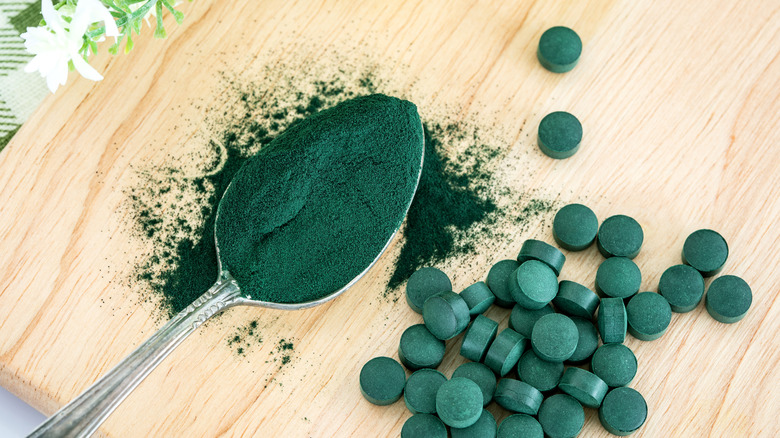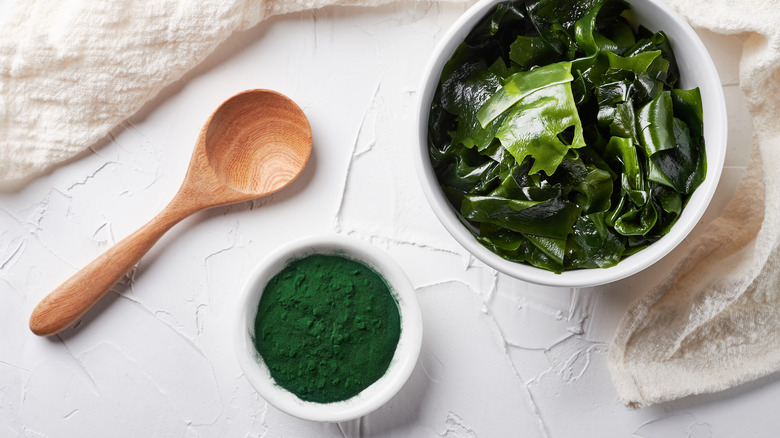This Is The Real Difference Between Spirulina And Chlorella Supplements
In the world of plant-based supplements, it's easy to blur the lines between algaes, tree barks and flower essences. If you've lost track of the difference between powders like spirulina and chlorella, you're not alone. Both of these items are technically algae of similar hues, however, according to Byrdie, their nutritional makeups prove slightly different — even if they taste the same.
While ingesting spirulina as a food source goes back millennia, chlorella only recently became a health-food discovery in the 19th century, the outlet notes. Indeed, chlorella's more intricate chemical makeup makes it more difficult to package and use, making it a second choice to spirulina. Chlorella and spirulina are both harvested in similar ways, but the former has to undergo a special cracking of its cell walls in order to be safe for human consumption. Chlorella without its cell walls cracked makes you sensitive to sunlight, the outlet reports. As such, many labels for the algae specify "Cracked cell".
Despite its more in-depth processing requirements, chlorella actually contains more nutrients than its sister algae, spirulina. For instance, a single ounce of spirulina contains 3% of the recommended daily allowance of Vitamin A, while the same serving of chlorella provides 300%. While both types of algae offer tons of phenolic compounds and carotenoids, chlorella racks up more minerals.
Take your time adding spirulina to your routine
If you're looking to copy that gorgeous blue smoothie that you saw on Instagram, stick with spirulina. Chlorella has a greener color, so if that mermaid toast you've been eyeing up is your next food adventure, spirulina should be your choice. Otherwise, on a biological level, a lot of the processes that they impact are the same. Well+Good explains that both chlorella and spirulina protect your cells from free radical damage, reduce inflammation and flood your system with important nutrients like magnesium, iron and potassium. Plus, if you don't think you're getting enough Omega-3s, both types of algae will help with this as well.
Spirulina contains copper, while chlorella doesn't — those looking for this trace metal should supplement with the bluer of the algaes. But, overall, the two are relatively similar in the way that they impact your system. Another benefit of the two includes detoxification; both spirulina and chlorella help remove heavy metals and other toxins from your body. Thus, both types of algae help fight off infection, the outlet notes.
Before you dump a few spoonfuls into your smoothie, however, it's best to take it slow. "Start with a small amount of one in a smoothie, so you can regulate how much you're putting in, and see how your body takes it," Bonnie Taub-Dix, RDN, recommends. Check with your doctor if you're on any medications to ensure that there are no interactions to be wary of. Plus, remember that it's just a supplement, you still need other sources of nutrients. "These algae will definitely help boost vitamin and nutrient intake, but they shouldn't replace actual food," she adds.

